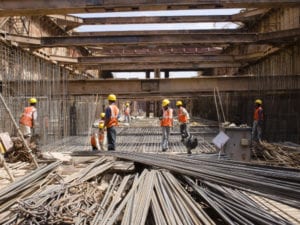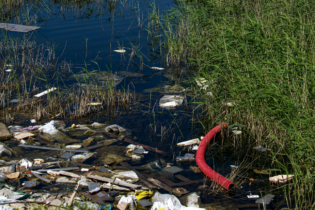The results of two surveys conducted nationwide in November by the South African Geomatics Institute (SAGI) are the latest in a number of surveys conducted over the past year with Built Environment professionals in the private sector, that confirm how government is not doing enough to fast track development.
This in spite of President Ramaphosa’s repeated call for the public and private sectors to work closely together to revive South Africa in the wake not only of Covid-19, but a failing economy even before the pandemic struck. Specifically representing experts in the fields of land and engineering surveying, planning, photogrammetry, remote sensing, geographical information systems (GIS) and land management, SAGI (a PBO) undertook the surveys to ascertain the levels of inertia it’s industry members had been experiencing with Government, particularly around the subdivision of agricultural land (known in short as Act 70/70). This followed several complaints received by SAGI in regards to lengthy delays in approval processes. Peter Newmarch, President of SAGI, explains: “The first survey was sent to all our members with an invitation to pass it on to any non-SAGI members who might also have subdivision applications currently in the system. The respondents were therefore a mix of land surveyors and town planners.” The first survey focused on decision time periods, development values, and stalls in application processing, while the second asked respondents to outline the challenges they were experiencing in attempting to follow up on their applications. With the Department of Agriculture, Forestry and Fisheries receiving approximately 160 applications per month, the 46 respondents who completed the survey provided a snapshot on 170 current applications from the private sector that were awaiting decisions. “Ideally, standard sub-division applications should take no longer than three months,” says Newmarch. “If we exclude recent applications submitted (43 out of the 170 in total) and only considered the remaining 127 applications that had been in the system for longer than three months, we found that only 39% had been approved in a three- to six-month period, with a staggering 61% taking longer than this.” The survey also revealed that 22% of the applications had been sitting in the system for more than a year. Adds Newmarch: “Part of the problem is that the Department has no legislated turnaround time in respect of applications. “Considering there is no need for advertising or public consultation processes on 70/70 applications, the waiting period to receive a decision really should be no longer than two to three months. Respondents indicated that, under the current challenging circumstances, they would even consider a wait of five months to be acceptable. More than this simply puts projects into jeopardy.” Chairperson of the Western Cape Property Development Forum (WCPDF), Deon van Zyl , notes that the results of the surveys are indicative of the exact same problems experienced by property developers across the board: “The delays in all approval processes by government departments, across all tiers, demonstrate the lack of understanding of property, or even general, economics. Delays cost the industry huge amounts of money as teams are placed on standby for months and even years on end. And this is at its best.“At its worst, when it results in the complete cancellation of projects, as these delays increasingly do, then thousands upon thousands of construction jobs just don’t happen. And then we wonder why there is rampant unemployment and corruption.”
In terms of developmental value, the 170 applications revealed a combined value of R10.7 billion. “Considering the average monthly number of applications sits at around 160, the overall investment values of applications that must be sitting with the Department over the course of a year, including from those in the industry that did not respond to the survey, must be staggering,” notes Van Zyl. In an attempt to understand why delays were occurring, respondents were further asked if any of their current applications had been deemed either incomplete by the Department, or that additional information had been requested. Only 2.9% had been informed of incomplete applications and 7.6% had been asked to provide additional information. For the remainder, there had either simply been no further or very limited communication from the Department on the progress of their application, even when enquiries were made by the applicants. Rated on a scale from 0 to 5 (with 0 being non existent and 5 being excellent), respondents were asked to rate past communication with the Department based on previous on applications (with the average scale response being 1.54) and in terms of current applications awaiting a decision (with the average scale response being 0.96). Asked to comment further on communications with the Department, respondents reported that the biggest problem lay in telephone lines being unanswered and no or inadequate responses to enquiry emails, while many others simply labelled communication with the Department as “non existent”. A further concerning statistic arising from the surveys were the high numbers (16.7%) of approvals received in error and that were actually meant for other applicants. Says Newmarch: “Administrative systems are not what they should be.” However, even more concerning was the number of approvals received with errors in them (54% of respondents reported receiving these), necessitating a further application, and a further wait, to rectify these errors before projects could proceed. Echoing Newmarch’s sentiments that this was “highly unacceptable”, Van Zyl notes that the WCPDF was keen to see the government’s eventual response to SAGI on the results: “We understand that SAGI is formulating both a letter to the Department on the findings, as well as a letter to the President to address the impact of these inefficiencies on investment throughout South Africa.” SAGI also intends to run half-yearly surveys, going forward, on all consent processes, in order to monitor year-on-year improvement, identify further bottlenecks and track developmental growth. Press Release by South African Geomatics Institute







